Dopamine’s Influence on Motivation and Recovery: Reigniting Drive and Balance
Introduction
Motivation is what moves us — to wake up, to pursue goals, to heal after setbacks. Yet when we lose it, even simple tasks feel impossible. Scientists now know that this drive to act and recover isn’t just psychological — it’s deeply neurochemical.
At the heart of it all is dopamine, often dubbed the “motivation molecule.” 🎯
Far more than a “pleasure chemical,” dopamine is the brain’s internal compass for reward, learning, and persistence. It drives us to seek progress, adapt after failure, and rebuild after burnout. Without dopamine, passion fades, focus slips, and recovery slows.
In this article, we’ll explore how dopamine fuels motivation and recovery, what disrupts it, and how to naturally balance this powerful neurotransmitter to restore both drive and inner calm.
Looking for supplements for Motivation and Recovery? Click here.
🧠 What Is Dopamine?
Dopamine is a neurotransmitter — a messenger chemical that transmits signals between brain cells (neurons). It’s produced primarily in the ventral tegmental area (VTA) and substantia nigra, and it influences systems responsible for movement, reward, attention, and emotion.
Dopamine plays three major roles in the brain:
Motivation and Reward — fuels the drive to pursue goals and feel satisfaction upon achievement.
Learning and Memory — reinforces behaviors that lead to positive outcomes.
Motor Control — regulates movement and coordination (its loss leads to disorders like Parkinson’s).
Rather than pure “pleasure,” dopamine represents anticipation — the excitement of what could be. It’s the chemical of wanting, not just liking.
“Dopamine makes you chase — not just enjoy.”
🌟 The Motivation Circuit: How Dopamine Drives You
Dopamine flows through a network called the mesolimbic pathway, also known as the reward circuit.
🔄 The Pathway:
Ventral Tegmental Area (VTA) — produces dopamine.
Nucleus Accumbens — interprets dopamine signals as motivation or reward.
Prefrontal Cortex — decides how to act on that motivation.
When dopamine is released in this circuit, it energizes your focus, fuels goal pursuit, and builds emotional resilience.
But when dopamine is depleted or dysregulated, motivation wanes — leading to procrastination, apathy, or even depression.
🎯 Dopamine tells your brain: “This is worth doing — keep going.”
⚡ Dopamine and Recovery: The Science of Bouncing Back
Motivation isn’t only about achieving — it’s also about recovering when things fall apart. Dopamine plays a crucial role in how we process failure, adapt, and rebuild energy after stress.
🧩 Dopamine and Resilience
When faced with adversity, dopamine helps you reinterpret challenge as opportunity. It’s the neurotransmitter of hope — signaling that your effort will eventually pay off.
Low dopamine makes obstacles feel insurmountable; balanced dopamine turns them into puzzles worth solving.
💪 Dopamine and Healing
Dopamine stimulates neurogenesis (growth of new neurons) and neuroplasticity — the brain’s ability to adapt after injury or trauma. This is why dopamine-rich states (hope, anticipation, joy) accelerate both emotional and physical recovery.
🧬 Optimism and motivation are not luxuries — they’re biological healing mechanisms.
🩸 Dopamine and Energy Regulation
Dopamine helps regulate mitochondrial function — the energy centers of cells. Healthy dopamine means steady energy and resilience under pressure; low dopamine creates fatigue, fog, and burnout.
So, recovery isn’t just about rest — it’s about rebuilding dopamine flow.
🌈 The Dopamine Loop: How Motivation Is Reinforced
Every time you achieve a goal, dopamine surges — not just to make you feel good, but to teach your brain what behaviors lead to reward. This creates a feedback loop:
You experience a small success 🪜
Dopamine spikes 💥
You feel rewarded and seek to repeat it 🔁
This loop forms the foundation of habit formation, learning, and long-term motivation.
But it also explains why unhealthy habits (social media scrolling, junk food, addictions) can hijack the system. Let’s look at that next.
⚠️ Dopamine Dysregulation: When Motivation Breaks Down

Modern life constantly bombards your brain with quick dopamine hits — from notifications and sugar to caffeine and instant gratification. Over time, this overstimulation leads to dopamine fatigue or receptor downregulation.
That means your brain needs more stimulation to feel normal — and genuine motivation (from hard work, creativity, or purpose) feels dull in comparison.
🧩 Signs of Dopamine Imbalance
Low motivation or apathy 😶
Difficulty feeling pleasure (anhedonia)
Poor focus or brain fog
Impulsivity or addiction
Restlessness or fatigue
Emotional flatness
🌀 The “Dopamine Rollercoaster”
High stimulation → dopamine spike → crash → craving → repetition.
Each cycle weakens your brain’s ability to experience natural joy.
To restore balance, you must reset dopamine sensitivity — not by cutting out pleasure, but by retraining your reward system for sustainable satisfaction. 🌿
🧘 Rebalancing Dopamine: From Chaos to Calm Drive
True motivation is steady, not manic. Here’s how to cultivate balanced dopamine flow for consistent energy and recovery.
🌤️ Create a “Low-Stimulation” Morning
Avoid instant dopamine spikes (phone, caffeine, notifications) in the first hour after waking.
Instead, let your brain reset its baseline with:
Sunlight exposure 🌞 (boosts dopamine + circadian rhythm)
Movement (walking, stretching, light exercise)
Breathwork or meditation 🧘
This teaches your brain that natural cues, not digital ones, regulate motivation.
🏃 Move Regularly — But Don’t Overdo It
Exercise increases dopamine receptor sensitivity and triggers endorphin release.
Aerobic exercise (like running or cycling) raises dopamine gradually, while resistance training builds long-term receptor balance.
⚖️ Overexercising, though, can deplete dopamine — balance is key.
🧠 Practice “Effort-Based Reward”
Dopamine thrives on earned satisfaction, not easy wins.
Engage in tasks that require focus and persistence — like learning an instrument, cooking, journaling, or creative projects.
Each effort → reward cycle builds dopaminergic resilience, making your brain crave meaningful progress instead of quick fixes. 🎨
🪷 Mindfulness and Gratitude
Mindfulness reduces dopamine volatility by lowering stress hormones and improving receptor sensitivity.
Gratitude journaling, in particular, increases serotonin–dopamine interaction, reinforcing calm motivation instead of anxious striving. 💞
🍎 Nourish Your Dopamine System
Dopamine is made from tyrosine, an amino acid found in:
Eggs 🥚
Fish 🐟
Chicken 🍗
Avocados 🥑
Nuts and seeds 🌰
It also requires cofactors like iron, B6, magnesium, and zinc for synthesis.
When these nutrients are lacking, dopamine can’t convert effectively — leading to fatigue and poor mood regulation.
🌿 Supplements That Support Healthy Dopamine
| Supplement | Role |
|---|---|
| L-Tyrosine | Dopamine precursor for energy and focus |
| Rhodiola Rosea | Prevents dopamine burnout under stress |
| Mucuna Pruriens (L-Dopa) | Natural dopamine source for low mood |
| Magnesium Glycinate | Stabilizes dopamine and calms the nervous system |
| Omega-3 Fatty Acids | Improve receptor sensitivity and brain fluidity |
| CoQ10 or PQQ | Support mitochondrial energy for dopamine signaling |
🧘 Combine these with mindful habits for a holistic approach — supplements can enhance, not replace, natural dopamine rhythms.
Looking for supplements for Motivation and Recovery? Click here.
🧩 Dopamine and Emotional Recovery
Dopamine doesn’t just motivate — it restores hope. It’s the neurochemical foundation for getting back up after emotional pain, disappointment, or burnout.
When dopamine is balanced, your brain expects positive outcomes — this expectation itself fuels resilience.
In depression, dopamine pathways often go offline, leading to apathy and disconnection. But consistent stimulation through small wins — like morning walks or creative projects — can reignite those pathways.
Each act of self-care becomes a neurochemical vote for recovery. 💫
🌺 The Healing Power of Small Wins
The brain doesn’t need grand achievements to release dopamine — it responds beautifully to incremental progress.
Examples:
Finishing a workout 🏋️
Cleaning your space 🧹
Completing a small task you’ve avoided ✅
Each completion triggers a mini dopamine wave, teaching your brain that effort = reward. Over time, this rewires motivation at a deep level.
Recovery is built one small victory at a time — chemically and emotionally. 🌱
💞 Dopamine and Relationships: Social Connection as Medicine

Social interaction is one of the most natural ways to regulate dopamine. Supportive relationships release both oxytocin and dopamine, which calm the stress response and reinforce trust.
Isolation, in contrast, suppresses dopamine activity, leading to lethargy and emotional flatness.
Engaging conversations, laughter, and acts of kindness reignite your motivation chemistry. 🤝
🧠 Connection is dopamine’s favorite feedback loop.
🌬️ Dopamine, Breath, and Stillness
Breathwork may not seem related to motivation, but it powerfully influences dopamine. Slow, rhythmic breathing reduces stress hormones and promotes dopamine’s steady release — especially through nasal breathing and box breathing (4-4-4-4) techniques.
Breath anchors the mind between action and rest, allowing recovery without depletion.
Inhale focus, exhale control. That’s dopamine in balance. 🌿
Want to try Breathwork? Click Here.
🧘 The Dopamine–Serotonin Partnership
Dopamine and serotonin often act like complementary forces — drive and peace, motivation and contentment.
Dopamine pushes you to chase goals 🎯
Serotonin helps you feel satisfied 🌸
When dopamine surges without serotonin, you feel restless or addicted. When serotonin dominates, you may feel calm but unmotivated.
Balance between the two creates emotional harmony — motivation without chaos, calm without apathy.
🪷 Chase purpose, not just pleasure.
🌌 Neuroplasticity and Dopamine: Rewiring Motivation
Neuroplasticity — the brain’s ability to form new connections — is heavily influenced by dopamine.
Each time you pursue and achieve a goal, dopamine strengthens the neural circuits involved. Over time, motivation itself becomes automatic.
That’s why consistent routines (even small ones) build deep, long-term drive. The brain learns that effort leads to reward — and rewires to expect it.
“You don’t rise to the level of your goals. You fall to the level of your habits.” — James Clear
🌿 Dopamine, Addiction, and Recovery
Addiction hijacks dopamine circuits by flooding the brain with artificial surges (from drugs, gambling, social media, etc.), which causes receptor downregulation — the brain becomes desensitized.
During recovery, dopamine sensitivity must be rebuilt through natural, sustainable rewards — exercise, creative work, nature, connection.
The early stages may feel empty — but over weeks, dopamine receptors reset, and joy returns in purer, steadier forms. 🌤️
🧠 Healing addiction is not about quitting pleasure — it’s about rediscovering authentic motivation.
🌄 The Role of Rest in Dopamine Renewal
Just as muscles need rest to grow, your dopamine system needs downtime to replenish.
Deep sleep, slow mornings, and unstructured playtime activate the default mode network (DMN) — a brain system that repairs motivation circuits and integrates learning.
If you’re constantly chasing stimulation, dopamine never gets a chance to recharge.
💤 Rest isn’t laziness; it’s neurochemical recovery.
🪶 Dopamine and Spiritual Motivation
Across cultures, spiritual or contemplative practices — meditation, prayer, music, service — are associated with sustained dopamine flow and emotional renewal.
Unlike material rewards, these forms of fulfillment create long-term dopaminergic stability — a sense of purpose that transcends temporary pleasure.
🌙 True motivation flows from meaning, not momentum.
💊 Modern Challenges: Dopamine in the Digital Age
We live in a world engineered for instant dopamine hits:
Scrolling through feeds 📱
Checking notifications 🔔
Binge-watching or gaming 🎮
These constant micro-rewards train your brain to expect novelty instead of depth.
To reclaim motivation, practice dopamine detoxes — periods of intentional simplicity where you eliminate excessive stimulation.
Even one day offline can restore your brain’s ability to enjoy real-world satisfaction again. 🌿
🌞 Building a Dopamine-Healthy Lifestyle
☀️ Morning
Sunlight exposure for 10 minutes
Gentle movement and deep breathing
Protein-rich breakfast with tyrosine sources
☀️ Midday
Focused work in 90-minute blocks (dopamine peaks)
Breaks for stretching and hydration
🌙 Evening
Digital cutoff one hour before bed
Gratitude journaling to shift toward serotonin
Herbal support: magnesium, reishi, or ashwagandha
Each small rhythm reinforces dopamine balance — activation in the morning, regulation at night. 🌇
💫 The Philosophy of Dopamine and Recovery
Dopamine teaches a subtle wisdom:
Chase growth, not perfection.
Value effort as much as outcome.
See recovery as progress, not pause.
Every challenge that tests your motivation is an invitation to recalibrate your neurochemistry — to align ambition with inner peace.
Motivation is not about intensity; it’s about consistency.
Dopamine is the rhythm that keeps you dancing through life’s ups and downs. 🪶
🌻 Final Thoughts: Reclaiming the Spark
Dopamine is not the “feel-good” chemical — it’s the feel-alive chemical.
It’s what gets you out of bed with purpose and helps you rebuild after exhaustion.
Balanced dopamine doesn’t make life effortless — it makes effort meaningful.
You don’t need to chase massive rewards to feel alive.
You just need to nurture the chemistry of momentum — one mindful habit, one breath, one victory at a time. 🌿
🧠 Recovery begins when motivation turns inward — from chasing pleasure to cultivating purpose.
Looking for online therapy ? Click Here.
📚 References
Schultz, W. (2016). Dopamine reward prediction error coding. Handbook of Behavioral Neuroscience.
Salamone, J. D., & Correa, M. (2012). The mysterious motivational functions of mesolimbic dopamine. Neuron.
Volkow, N. D., et al. (2011). Dopamine and the reward system in addiction and recovery. Nature Reviews Neuroscience.
Berridge, K. C. (2018). Evolving concepts of pleasure and motivation in the brain. Annual Review of Psychology.
Wise, R. A. (2004). Dopamine, learning, and motivation. Nature Reviews Neuroscience.
Grace, A. A. (2016). Dopamine system dysregulation by stress. Nature Reviews Neuroscience.
Lüscher, C. (2013). Drug-evoked synaptic plasticity causing addiction. Cold Spring Harbor Perspectives in Medicine.
Hariri, A. R. (2019). Emotion regulation and dopamine pathways in resilience. Trends in Cognitive Sciences.
Chen, P., & Flores, R. J. (2020). Exercise, dopamine, and brain recovery: mechanisms of neuroplasticity. Frontiers in Behavioral Neuroscience.
Andrew Huberman, PhD. (2022). Controlling Your Dopamine for Motivation, Focus & Satisfaction. Huberman Lab Podcast / Stanford University.
Related Posts
-
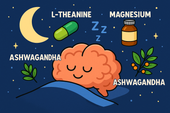
Nootropics That Promote Calm and Rest
Explore the world of calming nootropics — natural brain enhancers that promote relaxation, better focus, and deeper rest. Learn how L-Theanine, magnesium, ashwagandha, and other adaptogens help balance your nervous system, reduce stress, and support restorative sleep.
-
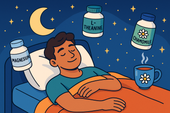
Best Natural Supplement Stack for Sleep
Discover the best natural supplement stack for deep, restorative sleep. Learn how nutrients like magnesium, L-theanine, glycine, and calming herbs such as chamomile and ashwagandha work together to relax your body, calm your mind, and improve sleep quality—naturally and safely.
-
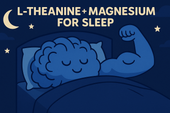
Combining L-Theanine and Magnesium for Sleep: A Calm Night, Naturally
Discover how combining L-Theanine and Magnesium can help you drift into deep, restorative sleep. Learn how this natural duo calms the mind, relaxes the body, and supports your nervous system—without grogginess the next morning.
-
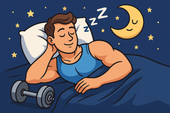
How to Sleep Better After Intense Workouts
Struggling to fall asleep after a tough workout? Learn how to optimize your post-training recovery with nutrition, hydration, and science-backed sleep strategies. Discover how to calm your nervous system, balance hormones, and wake up fully recharged for your next session.
-
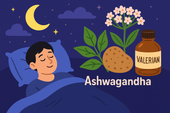
Ashwagandha and Valerian: A Bedtime Combo for Deep Rest and Emotional Reset
Discover the calming synergy of Ashwagandha and Valerian root, two natural sleep aids that help quiet the mind, ease anxiety, and promote deeper rest. Learn how this herbal duo supports the nervous system, balances stress hormones, and restores emotional peace — without next-day grogginess.
-
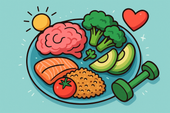
How to Create a Resilience-Boosting Diet
Discover how to build emotional and physical strength from the inside out with a resilience-boosting diet 🍎. Learn which foods stabilize your mood, how supplements like magnesium and omega-3s strengthen your stress response, and why pairing nutrition with breathwork and therapy creates lasting calm, focus, and vitality 🌿💪.
-

Best Teas and Herbal Blends for Calmness: Nature’s Way to Restore Inner Peace
Ashwagandha, the ancient adaptogenic herb, helps your body find balance during stress. Known as “Indian ginseng,” it supports cortisol regulation, boosts energy, and restores calm clarity. Discover how this powerful root promotes resilience, emotional balance, and steady vitality — one cup at a time. 🌸
-

Parenting and Emotional Strength: How to Raise Children Without Losing Yourself
Empathy is the bridge that connects hearts — the quiet power to understand, feel, and support another’s emotions without judgment. Learn how empathy strengthens relationships, enhances communication, and cultivates deeper compassion in everyday life. 🌿
-
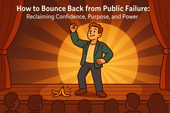
How to Bounce Back from Public Failure: Reclaiming Confidence, Purpose, and Power
Visualization is more than imagination — it’s brain training for resilience. By picturing calm, success, or healing, you activate the same neural pathways as real experience. Learn how daily visualization rewires your brain for confidence, emotional balance, and recovery from stress. ✨
-

Coping with Financial Stress Through Resilience: How to Stay Grounded When Money Feels Tight
Body awareness is the foundation of emotional resilience. By tuning into your body’s signals — tension, fatigue, or calm — you learn to recognize stress before it overwhelms you. Discover how mindfulness, gentle movement, and breathwork can deepen your connection with your body and restore balance from the inside out. 🧘
-

How to Stay Positive During Chronic Illness: A Guide to Emotional Strength and Hope
Creativity is more than art — it’s a form of healing. Whether through painting, writing, music, or small acts of expression, creativity helps release emotion, calm the nervous system, and reconnect you to joy. Discover how to use creativity as a tool for emotional balance, resilience, and self-discovery. 🌿
-
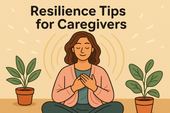
Resilience Tips for Caregivers: How to Stay Strong While Caring for Others
Joy isn’t the absence of pain — it’s the quiet strength to find light even in challenging times. Cultivating joy through small daily moments restores balance, releases stress, and reminds you of life’s beauty. Learn how to reconnect with authentic happiness, rebuild emotional energy, and nurture your nervous system through gratitude, presence, and play. 🌿
-

Building Resilience After a Breakup: How to Heal, Rebuild, and Rise Stronger
Social connection is one of the strongest predictors of emotional resilience. During difficult times, genuine relationships act as anchors — calming the nervous system, reducing stress hormones, and helping you regain perspective. Learn how cultivating real human connection can strengthen your mind, heart, and overall well-being. 🌿
-
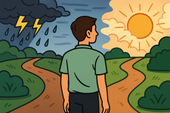
How to Stay Emotionally Strong During Job Loss
Your emotions are powered by brain chemistry — a delicate balance of neurotransmitters like serotonin, dopamine, and cortisol. When these chemicals work in harmony, you feel calm, focused, and resilient. Learn how daily habits, nutrition, and mindfulness can support your brain chemistry and boost emotional well-being naturally. 🌿
-
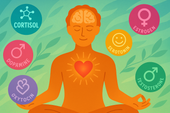
The Role of Hormones in Emotional Stability: How Your Chemistry Shapes Your Calm
Hormones shape more than your body — they shape your emotions, resilience, and sense of calm. From cortisol to serotonin, these chemical messengers influence how you react to stress, connect with others, and recover from challenges. Learn how to balance your hormones naturally to build lasting emotional stability and harmony within. 💫
-
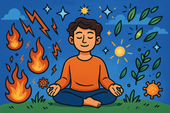
Mitochondria and Emotional Energy: The Cellular Power Behind Your Mood
Breathwork is one of the most powerful tools for emotional regulation and cellular balance. Through intentional breathing, you can calm your nervous system, increase oxygen flow to the brain, and even support mitochondrial energy. Learn how conscious breathing connects body and mind — transforming stress into presence and emotional strength. 🌿
-
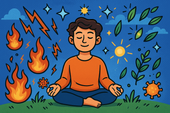
Inflammation and Its Impact on Mood Resilience: The Silent Link Between Body and Mind
Inflammation doesn’t just affect the body — it impacts the mind. Chronic inflammation alters brain chemistry, depletes serotonin, and makes emotional recovery harder. Learn how calming inflammation through nutrition, mindfulness, and sleep can restore balance, resilience, and a renewed sense of emotional strength. 💫
-
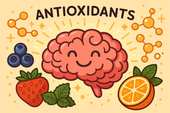
How Antioxidants Protect Emotional Well-being: The Hidden Link Between Oxidative Stress and Mental Health
Antioxidants do more than protect your body — they defend your mind. By neutralizing oxidative stress, antioxidants support serotonin, dopamine, and brain energy pathways that keep you calm, focused, and emotionally balanced. Discover how foods like berries, green tea, and dark chocolate nourish your brain, boost mood, and strengthen resilience from the inside out. 🌿✨
-
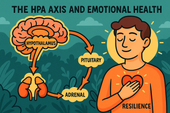
The HPA Axis and Emotional Health: The Hidden Bridge Between Stress and Mind
Neuroplasticity — the brain’s ability to rewire and adapt — is the foundation of emotional healing and resilience. When you face stress, trauma, or change, your neural pathways can reshape themselves to support new patterns of calm, focus, and self-awareness. Learn how daily practices like mindfulness, therapy, and breathwork strengthen neuroplasticity to transform emotional pain into personal growth. 🌸
-
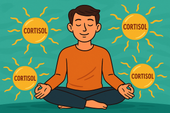
Why Cortisol Control Is Key to Resilience: Mastering Stress to Build Emotional Strength
Controlling cortisol — the body’s main stress hormone — is the secret to lasting resilience. When cortisol levels stay balanced, your mind becomes clearer, emotions steadier, and energy more sustainable. Learn how breathwork, mindset shifts, adaptogens, and daily rhythms can help you calm your stress response and build true inner strength. 🌞💪
-
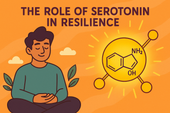
The Role of Serotonin in Resilience: How This “Mood Molecule” Shapes Emotional Strength
Serotonin — often called the “resilience molecule” — plays a vital role in how we handle stress, regulate mood, and recover from emotional challenges. Beyond happiness, this powerful neurotransmitter helps balance the gut-brain axis, stabilize the nervous system, and support emotional flexibility. Learn how nutrition, sunlight, mindfulness, and adaptogens can naturally boost serotonin and strengthen your emotional resilience. 🌞🧠
-
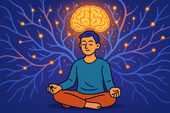
How Neuroplasticity Supports Emotional Growth: Rewiring the Brain for Resilience
Neuroplasticity is the brain’s built-in power to grow, adapt, and heal — and it’s the foundation of emotional transformation. Every mindful breath, compassionate act, or reframed thought strengthens new neural pathways that support resilience and self-awareness. Learn how your brain rewires through daily habits, helping you turn emotional challenges into opportunities for growth and calm. 🌿
-
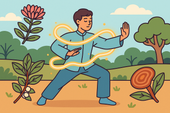
Tai Chi and Adaptogens for Mind-Body Balance: The Art of Harmonizing Energy and Resilience
Alchemy isn’t just an ancient science — it’s a timeless symbol of transformation and inner balance. By blending the physical and spiritual, alchemy teaches us that change begins from within. Just as metals are refined into gold, we too can transmute emotional pain, stress, and chaos into clarity and strength through mindful practice and self-awareness. 🌙✨
-
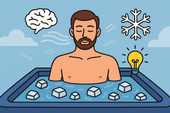
Cold Therapy and Emotional Control: Training the Mind Through the Body
Cold therapy isn’t just for athletes — it’s a tool for emotional mastery. By exposing your body to controlled cold, you train your nervous system to stay calm under stress, improving focus, mood, and resilience. This article explores the science of cold exposure, its impact on hormones and the vagus nerve, and how ice baths and cold showers can help you build emotional control, one breath at a time. 🧊🧘♂️
-
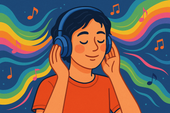
How Music Influences Emotional Recovery: The Healing Soundtrack of the Mind
Neuroplasticity — the brain’s ability to rewire and heal itself — is at the heart of emotional recovery. Through mindful habits, music, therapy, and consistent mental stimulation, your brain can form new connections that support resilience and well-being. Discover how neuroplasticity turns pain into growth, helping you rebuild balance, focus, and emotional strength. 🌿
-
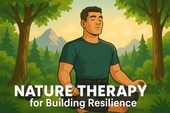
Nature Therapy for Building Resilience: Reconnecting With the Healing Power of the Earth
Nature therapy helps rebuild emotional resilience by reconnecting you with the healing rhythms of the Earth. From forest walks to sunlight exposure, nature restores balance to your nervous system, lowers stress hormones, and teaches emotional adaptability. Learn how spending time outdoors can enhance mental clarity, calm anxiety, and awaken your natural capacity to heal. 🌞
-
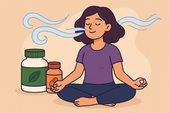
Breathwork Techniques That Pair with Supplements: The Ultimate Synergy for Stress Relief and Mental Clarity
Breathwork and supplements create a powerful mind-body synergy for stress relief, focus, and energy. By combining intentional breathing with adaptogens, nootropics, and calming nutrients, you can naturally regulate cortisol, sharpen mental clarity, and boost emotional balance. This guide explores the best breathwork techniques and supplement pairings to help you feel centered, calm, and energized from the inside out. 🌿
-
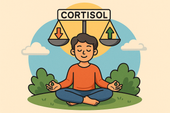
Why Cortisol Balance Matters for Emotional Strength
Balancing cortisol — your body’s main stress hormone — is essential for emotional resilience. When cortisol is chronically high, your mind stays stuck in survival mode, leading to fatigue, anxiety, and emotional instability. This article explores how nutrition, supplements, breathwork, and therapy can help restore healthy cortisol rhythms, regulate the nervous system, and strengthen your ability to handle life’s challenges with calm focus and emotional strength. 🌿
-
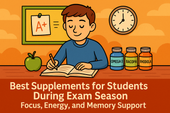
Best Supplements for Students During Exam Season: Focus, Energy, and Memory Support
Studying late into the night? Learn which natural supplements can boost focus, memory, and mental stamina during exam season — without the crash. From omega-3s to Bacopa and Rhodiola, discover your brain’s ultimate exam support stack. 🎓🧠
-
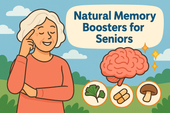
Natural Memory Boosters for Seniors: How to Keep Your Mind Sharp and Focused
Stay mentally sharp and confident as you age. Discover science-backed natural supplements and lifestyle habits that boost memory, focus, and brain longevity for seniors. 🌿🧠
-
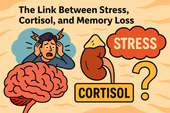
The Link Between Stress, Cortisol, and Memory Loss
Chronic stress can quietly erode your memory — and cortisol is the key culprit. Learn how stress hormones affect the brain, why the hippocampus shrinks under pressure, and how natural strategies can help you restore memory and mental clarity. 🧠✨
-
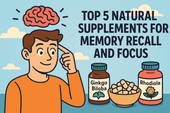
How to Build a Daily Supplement Routine for Memory Health
Want to sharpen your memory and stay mentally clear? Learn how to build a daily supplement routine for memory health — from morning focus to nighttime brain repair. Discover science-backed nutrients that boost recall, focus, and long-term cognitive resilience. 🧠🌿
-
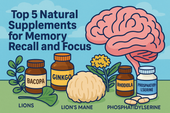
Top 5 Natural Supplements for Memory Recall and Focus
Looking to boost memory and concentration naturally? Discover the top 5 supplements — Bacopa, Ginkgo Biloba, Lion’s Mane, Rhodiola, and Phosphatidylserine — that enhance focus, recall, and long-term brain health. 🧠✨
-
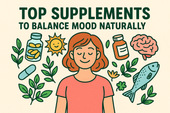
Top Supplements to Balance Mood Naturally
From omega-3s to adaptogens, discover the top natural supplements proven to support emotional balance, reduce stress, and promote inner calm — safely and effectively. 🌿✨
-
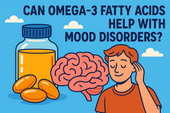
Can Omega-3 Fatty Acids Help with Mood Disorders?
Omega-3 fatty acids do more than support heart health — they can help balance mood, reduce depression, and calm anxiety. Discover how EPA and DHA nourish your brain, fight inflammation, and support emotional well-being from within. 🌊🧠
-

Vitamin D and Mood: The Sunshine Vitamin for Emotional Balance
Could the key to emotional balance be as simple as a little sunlight? Discover how vitamin D — the sunshine vitamin — influences serotonin, reduces inflammation, and helps you feel more positive and resilient year-round. ☀️💛
-

The Role of Magnesium in Reducing Irritability and Low Mood
Feeling on edge or emotionally drained? Magnesium could be the missing link between your body and your mood. Discover how this essential mineral reduces irritability, balances neurotransmitters, and helps your nervous system find calm again. 🌿✨
-
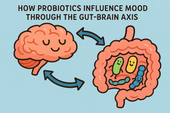
How Probiotics Influence Mood Through the Gut-Brain Axis
Discover how probiotics can do more than support your digestion—they can actually uplift your mood. This article explores the fascinating gut-brain axis and how balancing your gut bacteria through probiotics may help reduce anxiety, improve emotional stability, and support long-term mental well-being. 🌿🧠
-
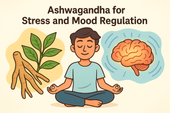
Ashwagandha for Stress and Mood Regulation
Discover how Ashwagandha, the powerful adaptogenic herb 🌿, helps your body manage stress and regulate mood. Learn how it balances cortisol, boosts GABA and serotonin, and supports emotional stability — helping you feel calm, focused, and resilient every day.
-
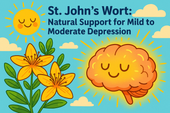
St. John’s Wort: Natural Support for Mild to Moderate Depression
Discover how St. John’s Wort, the “sunshine herb” 🌼, naturally supports mild to moderate depression. Learn how it boosts serotonin, balances mood, and promotes emotional resilience — with research showing its effectiveness compares to antidepressants, but with fewer side effects.
-
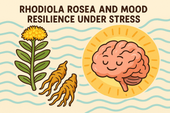
Rhodiola Rosea and Mood Resilience Under Stress
Discover how Rhodiola rosea helps your body adapt to stress 🌿. Learn how this powerful adaptogen balances cortisol, supports serotonin and dopamine, and strengthens emotional resilience — helping you stay calm, focused, and energized under pressure.
-

Chamomile and Lavender: Herbal Calm for Emotional Fluctuations
Discover how chamomile and lavender bring calm to emotional ups and downs 🌿. Learn how these two soothing herbs balance your nervous system, ease anxiety, and support restful sleep — naturally helping you find peace and emotional stability.
-
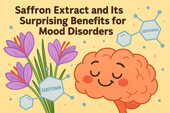
Saffron Extract and Its Surprising Benefits for Mood Disorders
Discover how saffron extract — the golden spice of joy 🌸 — can naturally support mood balance, ease anxiety, and lift mild depression. Learn what science says about its serotonin-boosting power, the ideal dosage, and how this ancient remedy compares to modern antidepressants.
-
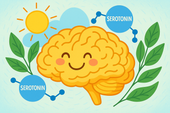
5-HTP and Serotonin: A Natural Path to Lifting Mood
Discover how 5-HTP naturally boosts serotonin 🌞 — the neurotransmitter behind mood, sleep, and emotional balance. Learn how this plant-derived compound supports happiness, reduces anxiety, and improves rest by helping your brain create more serotonin the gentle, natural way.
-
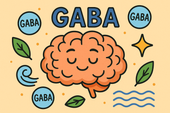
GABA Supplements for Reducing Anxiety and Mood Swings
Discover how GABA supplements can help reduce anxiety and balance mood naturally 🌿. Learn how this calming neurotransmitter works to quiet the mind, ease stress, and improve sleep — plus which nutrients and habits can boost your body’s own GABA production for long-term emotional stability.
-
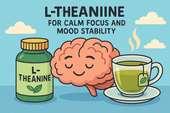
L-Theanine for Calm Focus and Mood Stability
Discover how L-theanine, the calming compound found in green tea 🍵, promotes focus, relaxation, and mood stability. Learn the science behind how it balances neurotransmitters, reduces stress hormones, and enhances clarity — helping you stay centered, calm, and productive without sedation.
-
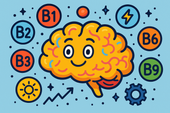
B Vitamins and Brain Chemistry: Supporting Energy and Emotional Balance
Discover how B vitamins power your brain chemistry ⚡. Learn how B6, B9, and B12 support serotonin, dopamine, and energy production — helping boost focus, mood, and emotional balance. From diet to supplements, explore how this vital nutrient group keeps your mind resilient and your energy steady.
-

N-Acetyl Cysteine (NAC) and Mood Disorders: What the Research Says
Learn how N-Acetyl Cysteine (NAC) supports brain health and mood balance 🧠. Discover how this antioxidant helps reduce oxidative stress, regulate glutamate, and improve emotional stability in depression, bipolar disorder, and anxiety — backed by cutting-edge psychiatric research.
-

Supplements for Bipolar Disorder: What May Support Stability
Discover the best supplements for bipolar disorder 🌿 that may support emotional stability and brain health. Learn how nutrients like omega-3s, magnesium, vitamin D, and NAC can help reduce inflammation, balance neurotransmitters, and complement traditional treatment safely.

















































